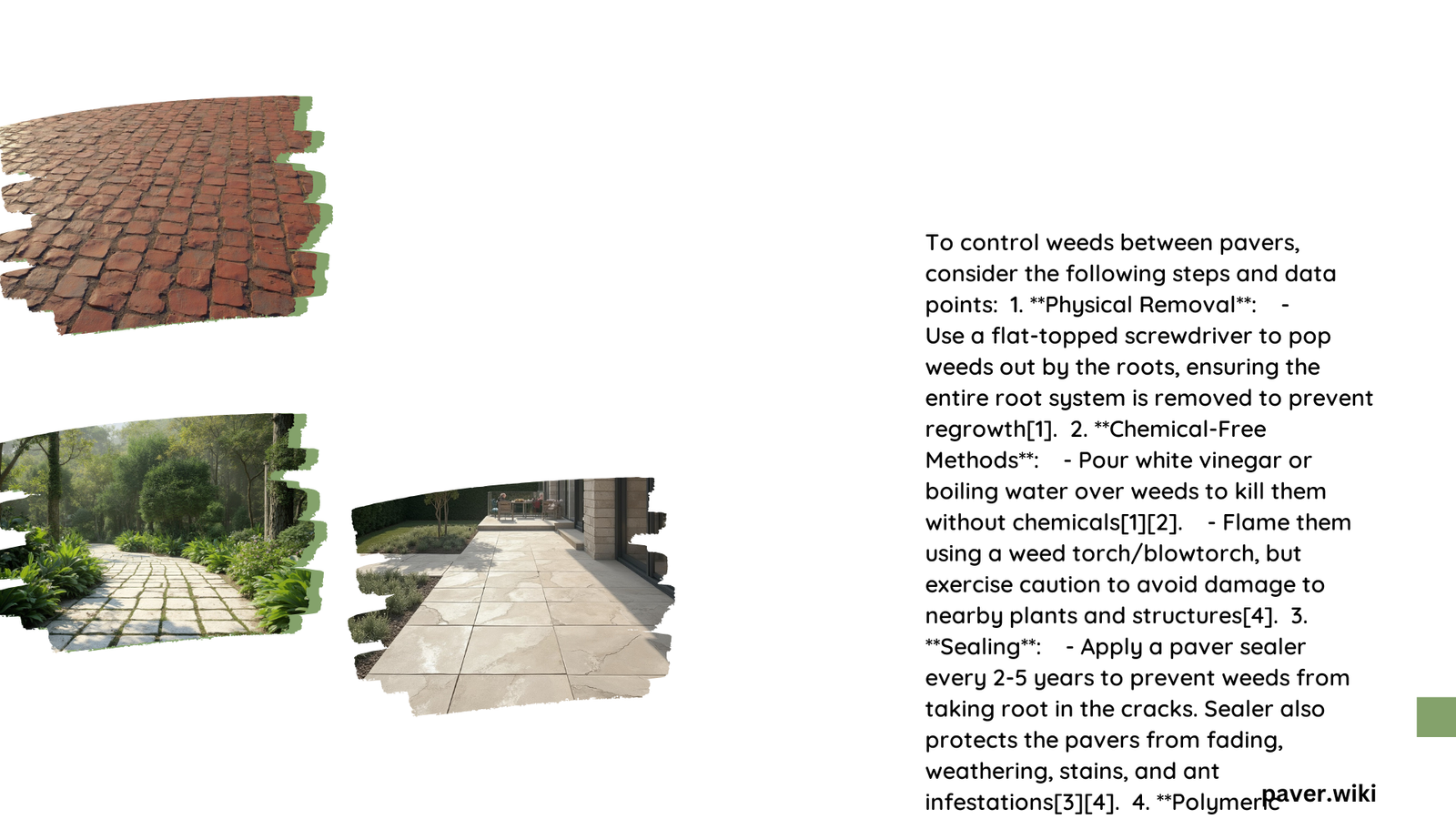Controlling weeds between pavers is essential for maintaining the aesthetic appeal and structural integrity of paved surfaces. This comprehensive guide explores various methods, from proper installation techniques to natural herbicides and weed barriers. By implementing these strategies, you can effectively prevent and eliminate weed growth, ensuring your paved areas remain clean and well-maintained for years to come.
What Are the Most Effective Methods for Controlling Weeds Between Pavers?
Effective weed control between pavers begins with proper installation and maintenance. Here are some key methods:
- Proper Installation
- Use a thick, quality base (6 inches for driveways, 3-4 inches for patios and walkways)
- Utilize crushed concrete for good drainage and paver stability
-
Apply polymeric sand to harden joints and prevent weed growth
-
Joint Spacing and Depth
- Fill joints with polymeric sand (1/8 to 1/4 inch deep)
-
Ensure complete filling to prevent weed seed germination
-
Sealing Pavers
- Apply sealer every 2-5 years
- Helps lock sand in place and protects against weathering
What Are the Best Herbicides for Pavers?

While chemical herbicides can be effective, natural solutions are often preferred to protect the environment and avoid damaging pavers. Here are some natural herbicide options:
- Boiling Water
- Pour directly on weeds
- Effective and inexpensive
-
Use caution to avoid burns
-
Vinegar Solution
- Mix equal parts white vinegar and water
- Spray directly into paver crevices
-
Avoid use near flower beds or other plants
-
Salt Solution
- Mix 1 cup salt with 2 cups water
- Apply directly to weeds
- Use cautiously to avoid affecting nearby plants or soil
How Can Natural Weed Control Techniques Be Applied?
Natural weed control methods are eco-friendly and often just as effective as chemical alternatives. Here’s a detailed look at some organic materials and their application:
| Method | Concentration | Application | Timing | Effects |
|---|---|---|---|---|
| Vinegar | 1:1 white vinegar and water | Spray into crevices | Immediate, may need reapplication | Can etch pavers if not careful |
| Salt | 1 cup salt to 2 cups water | Spray on weeds | Effective after a few days | May dehydrate soil and affect nearby plants |
| Baking Soda | Pure baking soda | Sprinkle over cracks, sweep into crevices | Effective after a few days, reapply every 4-6 weeks | Generally safe for pavers |
What Are the Specifications for Weed Barrier Fabric?
Weed barrier fabric can be an effective preventive measure. Here are the key specifications:
- Material Thickness: 3-6 mils (geotextile fabric)
- Permeability: Should allow water drainage but prevent weed growth
- Installation: Lay beneath paver base material, covering entire area
- Cost: Typically $0.10 to $0.30 per square foot
How Does Proper Paver Installation Prevent Weed Growth?
Proper paver installation is crucial for long-term weed prevention:
- Base Preparation
- Excavate area to proper depth
- Install geotextile fabric (if using)
-
Add and compact base material (crushed stone or concrete)
-
Sand Layer
- Add a thin layer of bedding sand (about 1 inch)
-
Level and compact
-
Paver Placement
- Lay pavers in desired pattern
-
Ensure proper spacing between pavers
-
Joint Filling
- Sweep polymeric sand into joints
- Compact pavers to settle sand
-
Mist with water to activate polymeric sand
-
Sealing
- Allow pavers to dry completely
- Apply sealer according to manufacturer’s instructions
What Are the Long-Term Maintenance Strategies for Weed Prevention?
To maintain a weed-free paver surface over time:
- Regular Cleaning
- Sweep or blow debris from paver surface weekly
-
Power wash annually to remove dirt and prevent weed seed accumulation
-
Reapplication of Joint Sand
- Check joints annually for sand loss
-
Refill with polymeric sand as needed
-
Periodic Sealing
- Reseal pavers every 2-5 years
-
Choose a sealer that offers UV protection and joint stabilization
-
Prompt Weed Removal
- Remove any weeds as soon as they appear
-
Use a paver weeding tool to avoid damaging joints
-
Preventive Treatments
- Apply natural weed preventives (like corn gluten meal) in early spring
- Consider using pre-emergent herbicides for severe cases
By implementing these methods and maintaining a consistent care routine, you can effectively control weeds between pavers and preserve the beauty and functionality of your paved surfaces for years to come.
References:
1. Install It Direct – How to Remove Weeds Between Pavers: 9 Ways to Do it Right
2. Homes and Gardens – How to remove weeds from pavers: 5 natural and easy ways
3. JC’s Landscaping – Natural Weed Killers for Pavers
